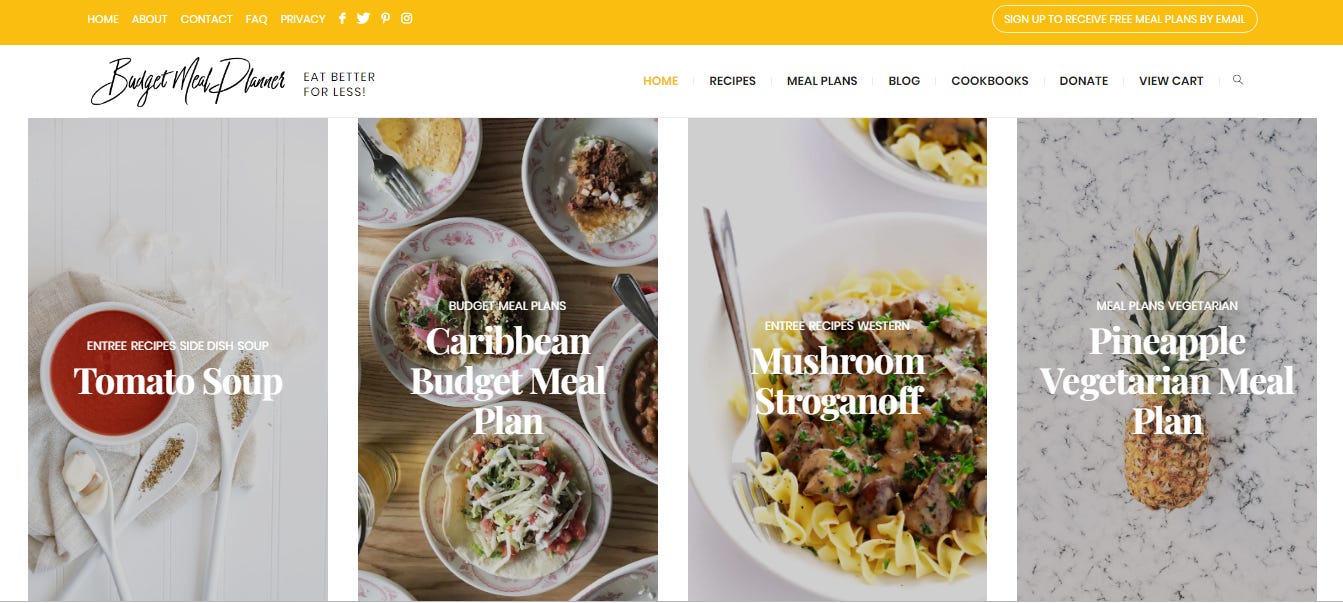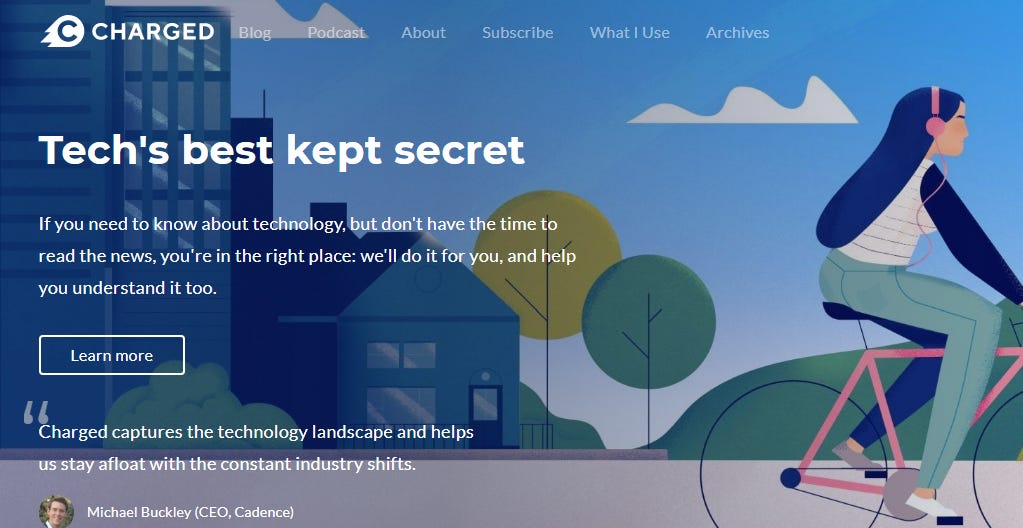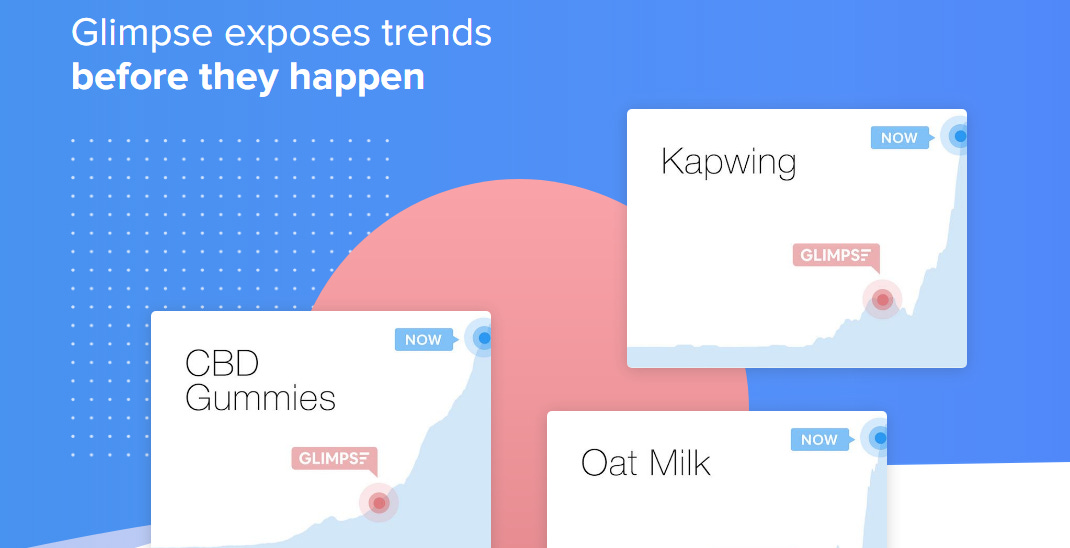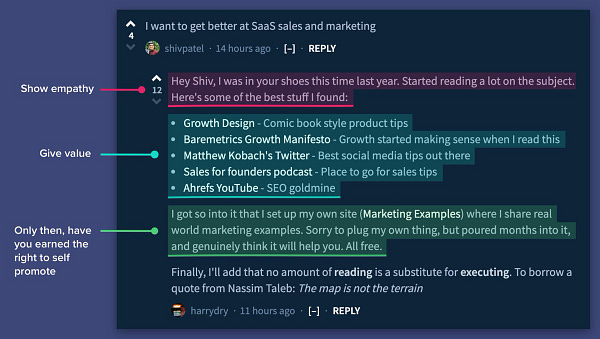How to start earning money writing a weekly newsletter
Reading Time: 5 minutes
Newsletters are extremely popular at the moment and require very little time and money to set up. A successful newsletter even has the potential to become a source of income. In this piece, we’re going to look at how you can earn money with a newsletter of your own.
Newsletter ideas that attract subscribers
In order to start earning money with a newsletter you need to have subscribers, and the best way to get subscribers is to provide useful content.
Budget Meal Planner is a great example of this. Created by Dianna Allen, Budget Meal Planner provides food recipe ideas starting at $5. In about two months’ time, Dianna had acquired 1000 new subscribers. BMP provides subscribers with real value by showing them how they can save money while still eating great tasting meals.

Another great example of a paid newsletter is Charged by Owen Williams. Charged helps people to stay updated about technology, something most people don’t have the time to do themselves. Instead of spending hours researching technology trends, Owen has done the work for you.

Glimpse is also a great example of a paid newsletter, which helps its readers identify growing trends across the internet before they take off. Glimpse tracks thousands of data points online which is very time consuming and requires expertise to make sense of.

The key to creating useful content is to provide information that people either don’t have the time to acquire themselves or aren’t capable of acquiring due to a lack of expertise. The examples above do this and provide real value that’s worth people’s time. They're providing a service.
Setting up your newsletter business
Once you’ve settled on an idea for your newsletter, it’s time to test it out. Before you commit yourself to your idea you want to first gauge whether people are interested enough in it.
The easiest way to do this is to sign up for Substack, a free and powerful newsletter publishing platform. With Substack you can capture signups for your newsletter, and eventually share your newsletter with these subscribers when you’re ready. Substack provides you with your own custom URL which you can share online.
Validating your newsletter
A great way to test your newsletter idea is to showcase an example of your content, somewhere where your ideal audience can find it. Dianna Allen did this with Budget Meal Planner and resulted in 300 signups within an hour. She found subreddits that related to her newsletter and started posting recipe ideas. At the end of each post, she would provide a subscription link to her newsletter mentioning something like “If you want more recipes like this, subscribe to my newsletter”. This resulted in over 2000 subscribers over a period of two months.
Marketing Examples tells you exactly how to create a post like this that doesn’t come across as shameless self-promotion.
The same can be done on Twitter by providing summary versions of your newsletter content in threads. I used this tactic to test the validity of DIY Startups. Instead of writing my first piece, I chose to post a summary version on Twitter and provided a Substack link so people could sign up. Based on the number of sign-ups, you can gauge the level of interest in your idea. You may have to repeat this process a few times to test the amount of interest. If you have enough subscribers, you can start writing content for them and grow your base further.
Ways to monetize your newsletter
Once you have validated your newsletter idea and you have an engaging subscriber base, you can potentially monetize your newsletter. There are a few different ways to do this.
Paid subscription
The most straightforward way is to put your content behind a paywall. Substack lets you do this with ease by offering a paid tier using Stripe. Just head over to settings and scroll down to “Set up paid subscriptions” to configure this.
Donations
Instead of earning money from charging your subscribers you can also earn money from donations. With Patreon, managing this is super easy and you can include a link to your Patreon page at the end of each newsletter post, kindly asking for a donation. Kevin Kelly’s 1000 true fans theory states that with the support of a few true fans, you can earn a decent income.
Building a community
The great thing about newsletters is they can potentially bring like-minded people together. Instead of charging people for your newsletter, you can also leverage your newsletter to create an online community. Here people can engage with one another, ask questions and get help which can be very powerful. You can charge people monthly to gain access to this community. You can use Slack or even closed Facebook or LinkedIn groups to host this community and use Patreon to manage your subscriptions.
We’ll look at building community startups more in-depth in the weeks to come.
Books and Merchandise
Writing a book based on the topics you cover in your newsletter can also be a great way to earn money. Writing a book may give you the opportunity to dive deeper into specific topics that might be interesting for your subscribers.
A great example of this is Refactoring UI. After writing tons of articles on UI design, they now released a very successful book based on topics they've been discussing for years.
Final words
There you have it, a quick and easy way to start a newsletter business.
It’s important to know that starting a newsletter business is a long term game and not a way to earn a quick buck. Building a following takes time and only works if you’re really passionate about what you’re writing.
The value of a newsletter isn't only measured in terms of monetization. It can be a great way to build up an online following and to leverage yourself as an opinion leader on a certain subject. This can add tremendous value to your career and present you with new networking options.
As with all DIY Startups, give it a try and see where it takes you.
Support
Thank you for taking the time to read this piece. If you haven't done yet please subscribe to our mailing list and help spread the word.
Our goal is to help people turn their passion into profit!





